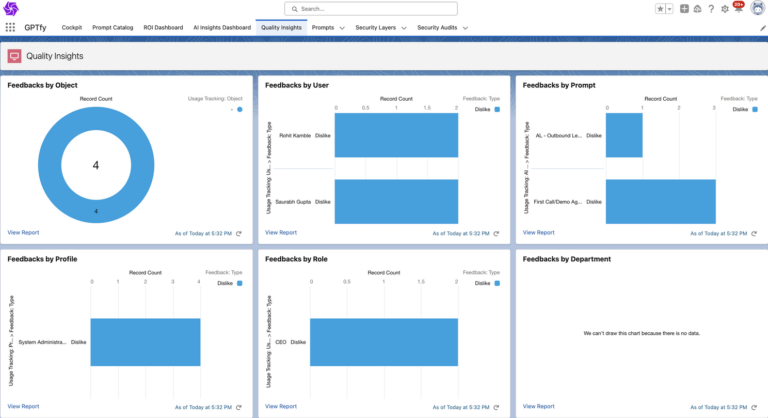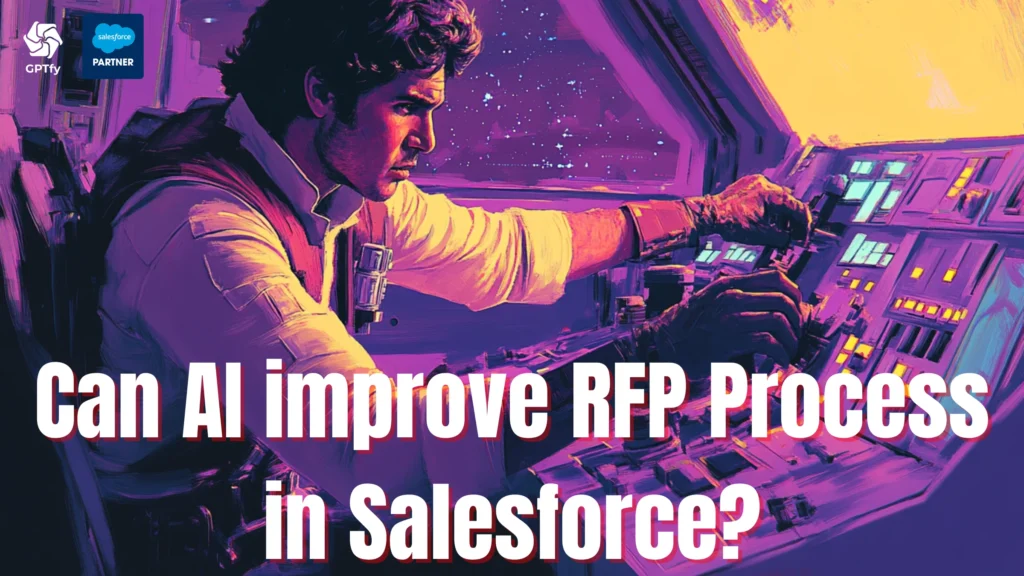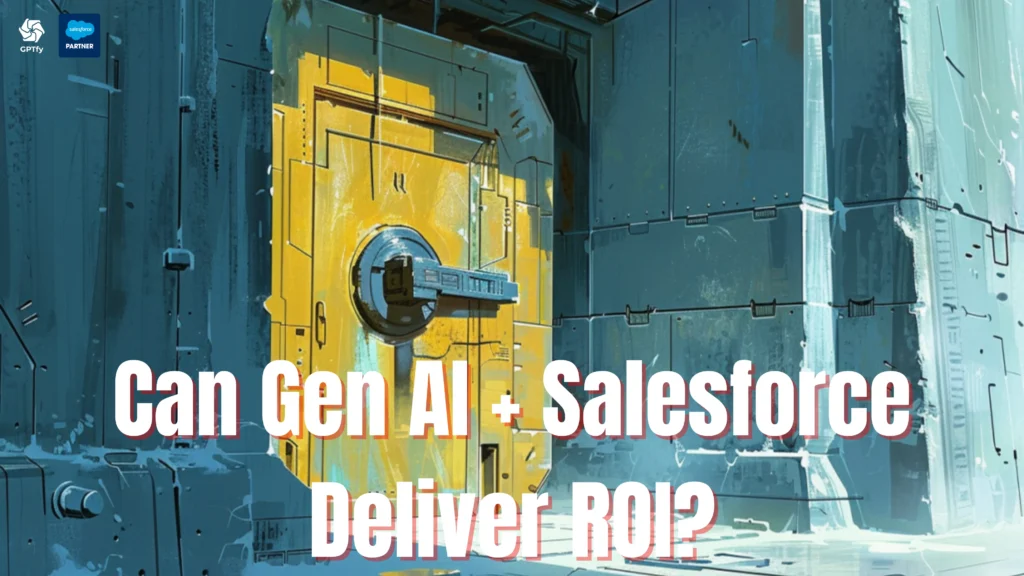
GPTfy + Salesforce Trust Layer for Secure AI Deployments
55% of reps in any organization use generative AI without permission

Welcome back! Part 1 covered the ‘What’ and ‘How’ of crafting effective prompts.
Part Deux, in the words of Willy Wonka, “Keeps on truckin’. ” Here’s what we have here.
4. Salesforce Trust Layer: Enforce Data Privacy & Security
5. Testing and Refining Prompts
6. Publishing Prompts for Users
7. Tracking Value and Usage
In the world of AI, safeguarding sensitive data is a lot harder because we now have more moving parts – and a Gen AI black box called LLM (Large Language Model).
This makes it harder for CISOs and other InfoSec professionals, who are already overburdened by cyberattacks, and other security challenges.
65% of IT leaders experienced a security breach between June 2021 and June 2022.
Some of the key concerns with AI:
What is a Trust Layer? And how can your AI get one?
Imagine placing a protective layer around generative AI, akin to safeguarding your organization. While internal alterations may be limited, the focus shifts to shaping inputs and scrutinizing outputs for enhanced trustworthiness.
A security trust layer is a protective framework implemented to ensure the privacy and security of sensitive information.
It involves measures such as data privacy tools, including customizable block lists, regex transformation, and pattern masking to enforce data rules automatically when processing prompts.
Check out Salesforce + AI Best Security Practices
Exposure to critical information, such as SSNs, passwords, or financial details, can lead to security risks and compliance headaches.
Using a multi-layered masking with block lists & RegEx can prevent senstive data & PII/PHI from ever leaving your Salesforce Org.
Refining a prompt means fine-tuning the instructions or questions you give to the AI to get the best and most accurate results.
Think of it like teaching the AI how to understand and respond to your specific needs within the Salesforce environment.
Enter the realm of iterative perfection! Prompt engineering demands continuous testing and refinement.
Create sample data scenarios, review outputs, and tweak until the results align with your defined expected outcomes.
Here’s how you can do it:
Optimize prompt performance seamlessly with GPTfy’s agile, self-service workflow. Test, refine, and validate prompts iteratively without involving IT, ensuring your AI-generated results align perfectly with expectations.
Compatible with Pro, Enterprise & Unlimited editions. Save on licensing costs.
Publish prompts to intended user-profiles and tie them to relevant record types. This strategic move ensures that user groups derive maximum value from AI on a daily basis.
GPTfy simplifies the process, allowing admins to effortlessly publish polished prompts to select Salesforce user-profiles and tie them directly to appropriate record types for widespread user access.
Engaging users is like throwing a party, and your dashboard wants to be the life of it. Regularly tracking usage helps you know if it’s a wild bash or a quiet soirée.
After all, in the world of dashboards, those numbers speak louder than words!
Measure time savings, identify prolific users, and analyze activity trends by prompt, user, and object.
GPTfy offers dashboards that showcase the ROI of prompts through metrics on time savings, user adoption, and overall utilization.

Track usage patterns to identify power users and popular prompts and measure ROI in tangible terms for organizational benefit.
Get ready for a hands-on journey!
Stay tuned for Part 3, where you will learn how to map relevant fields, set data rules, test iteratively, publish profiles to Account Managers, and showcase the tool’s flexibility and scalability in a Salesforce environment.
And there you have it – a comprehensive exploration of prompt engineering best practices brought to you by GPTfy’s robust capabilities.
From defining expected outcomes to empowering users with secure and efficient AI, you’re ready to witness the power of AI firsthand.
Let me know what you guys think, and what else I should talk about in part 3.
PS: If you have any questions, feel free to comment those.

Saurabh is an Enterprise Architect and seasoned entrepreneur spearheading a Salesforce security and AI startup, with inventive contributions recognized by a patent.

55% of reps in any organization use generative AI without permission

Find out how you can improve your business with AI in Salesforce.

See how AI can improve your Email 2 Case in Salesforce

See how AI can improve your RFP Process with AI in Salesforce

Learn how to add grounding rules to your Salesforce AI prompts.

Is it even worth it to invest in AI for your Salesforce users? Read to find out.

Understand the What, Why, Who, What, and How of Prompts for AI in Salesforce